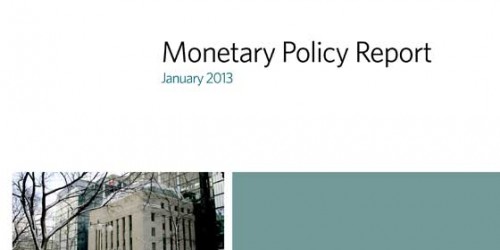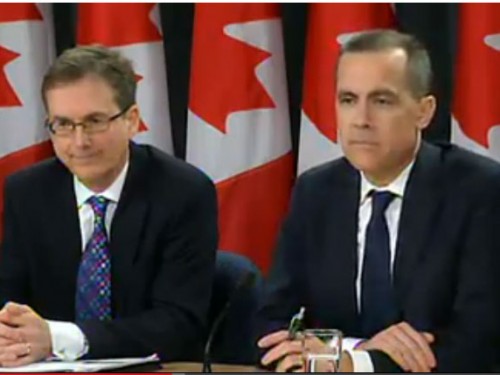Release of the Monetary Policy Report
Good morning. Tiff and I are pleased to be here with you today to discuss the January Monetary Policy Report, which the Bank published this morning.
- While the global economic outlook is slightly weaker than the Bank had projected in October MPR, global tail risks have also diminished.
- The economic expansion in the United States is continuing at a gradual pace, restrained by ongoing public and private deleveraging, global weakness and uncertainty related to fiscal negotiations.
- Europe remains in recession, with a somewhat more protracted downturn now expected than in October.
- Growth in China is improving, though economic activity has slowed further in some other major emerging economies.
- Supported by central bank actions and by positive policy developments in Europe, global financial conditions are more stimulative.
- Commodity prices have remained at historically elevated levels, though temporary disruptions and persistent transportation bottlenecks have led to a record discount on Canadian heavy crude.
- In Canada, the slowdown in the second half of 2012 was more pronounced than the Bank had anticipated, owing to weaker business investment and exports.
- Caution about high debt levels has begun to restrain household spending.
- The Bank expects economic growth to pick up through 2013.
- Business investment and exports are projected to rebound as foreign demand strengthens, uncertainty diminishes and the temporary factors that have weighed on resource sector activity are unwound.
- Nonetheless, exports should remain below their pre-recession peak until the second half of 2014, owing to a lower track for foreign demand and ongoing competitiveness challenges, including the persistent strength of the Canadian dollar.
- Consumption is expected to grow moderately and residential investment to decline further from historically high levels. The Bank expects trend growth in household credit to moderate further, with the debt-to-income ratio stabilizing near current levels.
- Relative to the October MPR, Canadian economic activity is expected to be more restrained. Following an estimated 1.9 per cent in 2012, the economy is expected to grow by 2.0 per cent in 2013 and 2.7 per cent in 2014. The Bank now expects the economy to reach full capacity in the second half of 2014, later than anticipated in October.
- Core inflation has softened by more than the Bank had expected, with more muted price pressures across a wide range of goods and services, consistent with the unexpected increase in excess capacity.
- Total CPI inflation has also been lower than anticipated, reflecting developments in core inflation and weaker-than-projected gasoline prices.
- Total CPI inflation is expected to remain around 1 per cent in the near term. It is expected to rise gradually, along with core inflation, to the 2 per cent target in the second half of 2014 as the economy returns to full capacity and inflation expectations remain well-anchored.
- Despite the reduction in global tail risks as a result of a series of actions by European and American authorities, the inflation outlook in Canada is still subject to significant risks.
- The three main upside risks to inflation in Canada relate to the possibility of stronger-than-expected growth in the U.S. economy, higher Canadian exports and renewed momentum in Canadian residential investment.
- The three main downside risks to inflation in Canada relate to the European crisis, more protracted weakness in business investment and exports in Canada, and the possibility that growth in Canadian household spending could be weaker.
- Overall, the Bank judges that the risks to the inflation outlook in Canada are roughly balanced over the projection period.
- Reflecting all of these factors, the Bank today maintained the target for the overnight rate at 1 per cent.
- While some modest withdrawal of monetary policy stimulus will likely be required over time, consistent with achieving the 2 per cent inflation target, the more muted inflation outlook and the beginnings of a more constructive evolution of imbalances in the household sector suggest that the timing of any such withdrawal is less imminent than previously anticipated.
With that, Tiff and I would be pleased to take your questions.


